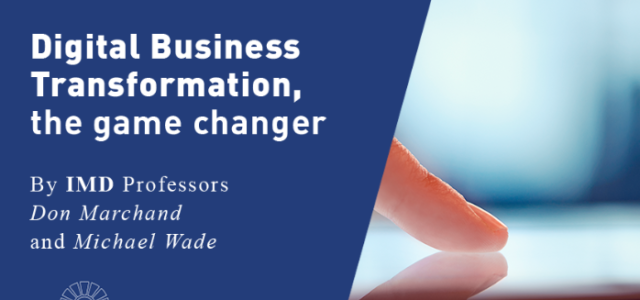SAP is de-supporting certain products and encouraging customers to transition to SAP HANA. Specifically, SAP has announced the end of mainstream maintenance for SAP Business Suite 7 core applications by the end of 2027. After this period, there will be optional extended maintenance available until the end of 2030. This move is part of SAP’s broader strategy to push customers towards adopting SAP S/4HANA, which is built on the SAP HANA platform.
Looking at this as an inflexion point and through my experience as a Chief Information Officer, Chief Operating Officer, and Chief Transformation Officer, my brain naturally turns to how I would leverage this to improve P&L performance, optimise business processes, and finally as a lever to reduce operating costs by optimising people, processes, and technology.
For organisations grappling with the decision to upgrade to SAP HANA, the potential benefits go far beyond just system upgrade. Recent client engagements have shown how this mandatory change is a golden opportunity to revolutionise operational efficiency, cut costs, and unlock the full potential of AI and advanced analytics. Here’s why this upgrade is a more significant opportunity than many realise:
Unprecedented Cost Reduction and Operational Efficiency
Streamlining Operations: Switching to SAP HANA allows consolidation of different data sources into a centralised, cloud-based platform. From client experiences, this has eliminated data silos, ensured consistent data quality, and boosted data governance. The result? Streamlined operations, elimination of technical debt, and lower operational costs. Switching to SAP HANA is like upgrading from a messy, cluttered workspace to a highly organised, streamlined office where everything is in its place and easily accessible.
Phased and Managed Rollouts: Implementing the SAP HANA upgrade in controlled phases minimises disruptions and allows for step-by-step improvements. This methodical approach, as seen in various client projects, ensures risks are managed effectively and operational efficiency keeps improving throughout the transition. Think of it like constructing a building floor by floor, ensuring stability and allowing adjustments along the way, rather than attempting to build the entire structure at once.
Integration of Best-in-Breed Applications: After the upgrade, clients have successfully integrated advanced applications and tools that enhance operational efficiency. Leveraging best-in-breed solutions for data curation, analytics, machine learning, and AI has cut down on manual processes, lowered operating costs, and improved decision-making capabilities. Integrating advanced applications post-upgrade is like trading in a standard car for a high-performance sports car, offering superior speed, handling, and efficiency.
Enabling AI and Advanced Analytics
Centralised and High-Quality Data: Upgrading to SAP HANA provides a unified data repository, eliminating silos and ensuring high-quality, consistent data. This centralisation is crucial for effective AI and machine learning applications, which rely on accurate and comprehensive datasets, as evidenced by client outcomes. Think of it like running a business with all your key documents and resources scattered across different offices – SAP HANA brings everything you need into one central location, streamlining operations and enhancing efficiency.
Real-Time Data Processing: Shifting from batch to real-time data processing is like moving from 3G to 5G. It enables instant insights and timely decision-making. Clients have found this particularly beneficial for AI applications that require up-to-date data to generate accurate predictions and analyses. Real-time data processing is akin to upgrading from watching pre-recorded TV shows to streaming live broadcasts, allowing for immediate engagement and up-to-date information.
Enhanced Data Integrations: With SAP HANA, clients have leveraged hybrid data integration strategies that include tools like SAP Data Document AI and Asure Cloud services. This comprehensive data management framework supports both batch and streaming processes, ensuring data is always ready for analysis. Picture a well-orchestrated symphony where every instrument (data source) plays in perfect harmony.
Leveraging Low Code/No Code Technologies
Rapid Solution Development: Tools like Mendix enable rapid development and deployment of solutions, integrating seamlessly with both SAP and non-SAP environments. From our engagements, we’ve seen how this boosts agility, reduces development and maintenance costs, and empowers business users to drive innovation. Utilising low code/no code platforms is like assembling furniture with easy-to-follow instructions and pre-drilled holes, enabling quick and effortless assembly even for non-experts.
Automating Repetitive Tasks: Automating routine tasks and processes with low code/no code platforms frees up valuable time and resources. Clients have been able to focus more on strategic initiatives, increasing operational efficiency and reducing IT backlog. Think of it as having a team of robots handling the mundane tasks, allowing your best resource to concentrate on hight priority initiatives.
Business Process Rationalisation and Optimisation
Streamlining and Standardising Processes: One of the most significant advantages of upgrading to SAP HANA is the ability to rationalise and optimise business processes. By consolidating disparate systems into a single, integrated platform, organisations can standardise processes across different departments and regions. This standardisation reduces complexity, ensures consistency, and aligns everyone with the same objectives. It’s like turning a chaotic, mismatched set of instructions into a clear, cohesive manual.
Continuous Improvement with AI: AI plays a crucial role in continuous business process improvement. SAP HANA’s real-time data processing capabilities enable organisations to monitor processes continuously and identify inefficiencies as they occur. Machine learning algorithms can analyse historical data to predict bottlenecks and suggest improvements, ensuring that processes are not only optimised but also continuously refined. It’s like having a personal coach who constantly watches your performance, providing tips and adjustments to improve your game.
Integration of Advanced Tools Like Mavim: Mavim can be a powerful tool in optimising SAP transitions and driving continuous improvement. By visualising current processes, simulating changes, and monitoring performance, organisations can effectively plan their move to SAP HANA while identifying areas for process enhancement. The tool’s ability to analyse process data and simulate different scenarios enables businesses to make informed decisions about process redesign and automation.
This data-driven approach helps uncover bottlenecks, optimise resource allocation, and ultimately improve operational efficiency. Continuous improvement is facilitated through Mavim’s capacity to track process metrics, identify improvement opportunities, and evaluate the impact of changes. By fostering a culture of data-driven decision making, organisations can achieve sustainable performance gains and stay ahead of the competition.
The combination of SAP HANA and Mavim is like upgrading from a basic toolbox to a state-of-the-art workshop. It not only equips you with the essential tools for the job but also provides advanced machinery that enhances efficiency and accuracy. This upgrade transforms your operational capabilities, allowing you to streamline processes, reduce costs, and avoid common pitfalls. Just as a modern workshop can handle more complex tasks with precision and speed, the integration of SAP HANA and Mavim optimises your business operations, making them more agile and effective.
Risks of Developing a New Reference Architecture Before ECC to HANA Migration: Migrating from SAP ECC to SAP HANA is a pretty big deal for any business. This upgrade promises better performance, real-time analytics, and simpler data models. But, let’s face it, it’s also quite challenging, especially if you try to develop a whole new reference architecture before making the switch. Doing so can bring unnecessary complexity, increase costs, and potentially lead to mismatched architectures. To tackle these challenges effectively, it’s important to understand the potential pitfalls.
Creating a new reference architecture without fully grasping the issues with your current ECC system can lead to overengineering. Basically, you’re adding layers of complexity that aren’t needed, which can hike up costs and make the implementation process a real headache. On top of that, developing a new architecture takes a lot of time and resources. Trying to juggle this with the actual migration can stretch your team thin, delaying the whole process and making it more expensive than it needs to be.
Another big risk is that the new architecture might not fit well with your evolving business needs. During the migration process, business priorities can change, and a pre-designed architecture might not keep up with these shifts, leading to misalignment. Plus, HANA has specific capabilities and constraints that need to be considered when designing your architecture. If you don’t take these into account, you might end up with a system that doesn’t work as well as it should, requiring a lot of rework and causing further delays.
These delays can mean you miss out on the benefits of HANA’s improved performance and real-time analytics, which can really impact your day-to-day operations and decision-making. The combined complexities of developing a new architecture and migrating to HANA ramp up the overall project risk. To mitigate this, businesses should focus on getting the migration done first and make any necessary architecture tweaks later. This way, you can leverage the benefits of HANA sooner.
Moving from ECC to HANA is a bit of a mission, it’s well worth it. Developing a new reference architecture before the migration can bring significant risks and complexities, but focusing on a smooth migration first can help you quickly reap the benefits of HANA. By managing your resources wisely, aligning your strategy with business goals, and making the most of the tools and support available, you can ensure a successful transition. Investing in training and support for your migration team, along with using SAP and third-party solutions, can make the process much smoother and more effective.
Alternative Approach: Migrate First, Then Optimise: A more pragmatic approach is to migrate to HANA first and then optimise. This method allows for understanding the current state of your systems, providing valuable insights into behaviour, performance bottlenecks, and data quality issues. Based on this real-world data, you can then develop a tailored reference architecture. This phased approach minimises risks and maximises benefits, allowing for a gradual and controlled evolution of your architecture.
Developing a new reference architecture can be valuable in certain scenarios, prioritising the migration to HANA first and then focusing on optimisation reduces risks, accelerates time-to-value, and ensures better alignment with your HANA environment’s specific needs.
Enhancing Customer Centricity
Improved Customer Insights: With a centralised data repository and advanced analytics, organisations can gain deeper insights into customer behaviours and preferences. Clients have used these insights to tailor their products and services, enhancing customer satisfaction and loyalty. It’s like having a window into your customers’ minds, anticipating their desires before they even realise them.
Personalised Customer Experiences: Real-time data processing and AI capabilities enable organisations to deliver personalised experiences to their customers. Clients have reported significant improvements in customer engagement and retention by leveraging these technologies to provide timely and relevant interactions. Delivering personalised customer experiences with AI is like having a personal shopper who knows your preferences and suggests the perfect items at just the right time.
Streamlined Customer Service Operations: By integrating best-in-breed customer service applications and automating routine tasks, organisations can streamline their customer service operations. Clients have found that this leads to faster response times and improved overall service quality. Think of it as having a concierge service for your customers, always ready to assist with precision and speed.
Driving Growth and EBITDA Performance
Data-Driven Decision Making: The advanced analytics and machine learning capabilities of SAP HANA empower organisations to make data-driven decisions. Clients have seen positive impacts on growth and EBITDA performance by using these insights to identify new opportunities and optimise existing operations. It’s like creating your very own version of Waze – it not only shows you the way but also suggests the best routes and avoids traffic.
Operational Efficiency: The improvements in operational efficiency from SAP HANA have directly contributed to better EBITDA performance for clients. Streamlined processes, elimination of technical debt, and lower operational costs all contribute to healthier bottom lines. It’s akin to tuning a car engine – it runs smoother, faster, and uses less fuel.
Scalability and Flexibility: The modular approach of the new reference architecture allows organisations to scale and adapt quickly. Clients have been able to respond to market changes more effectively, driving sustained growth and competitive advantage. Envision a digital toolkit where you can seamlessly integrate and customise solutions, ensuring the perfect fit for any business need or technological challenge.
Missed Opportunity: Why Delaying Your Transition to SAP S/4HANA Could Be a Costly Mistake
Predicted Delay in Transition: Despite the clear advantages of moving to SAP S/4HANA, predictions indicate that only 50% to 70% of SAP ECC users will have made the transition by the 2027 deadline. This means approximately 500,000 businesses could miss out on a significant competitive edge by delaying their move. These companies need to ask themselves whether this delay will leave them lagging behind their competitors, give rivals a chance to catch up, or even make them more attractive as low-cost acquisition targets.
Innovation and Efficiency: Migrating to S/4HANA brings substantial improvements in functionality and efficiency. Businesses that procrastinate are essentially sticking with an outdated typewriter while their competitors have upgraded to modern computers. By not making the switch, they miss out on advanced features that can streamline operations, cut costs, and enhance decision-making. The new system provides real-time data processing and analytics capabilities that can transform business operations and strategy.
Cost Management: The longer companies wait to transition, the more they risk increasing costs. After the 2027 deadline, extended maintenance will incur an additional 2% fee. Furthermore, last-minute migrations are likely to be more expensive due to the higher demand for implementation partners and resources. It’s akin to waiting until the last moment to buy concert tickets – prices soar and availability plummets.
Conclusion: If you’re considering an upgrade to SAP HANA, the benefits go far beyond just immediate system enhancements. This upgrade presents a chance to significantly cut operating costs, streamline operations, and fully harness the power of AI and advanced analytics. By centralising data, enhancing integrations, and utilising low-code/no-code technologies, your organisation can completely transform its IT infrastructure, leading to sustained success and innovation in this digital era. Upgrading to SAP HANA isn’t just a necessary step—it’s a strategic move that can give you a substantial competitive edge, improve customer centricity, and boost growth and EBITDA performance. Don’t wait—make the shift to SAP HANA and unlock your organisation’s true potential today.
About the Author: Shaun Taylor has over 25 years of experience in digital, technology, and business leadership. As an experienced ERP Programme Director, he has led eight global ERP implementation and recovery programmes. With over 20 years on senior leadership teams and executive committees, Shaun’s expertise spans M&A due diligence, carve-outs, integrations, and value creation programmes. He has spearheaded six operating model and cost transformation programmes, consistently delivering significant operational efficiencies and cost savings. Shaun’s extensive experience has equipped him to navigate complex transformations and leverage technology to drive business success, making him a trusted advisor in the field of business and technology transformation.
Article by channel:
Everything you need to know about Digital Transformation
The best articles, news and events direct to your inbox
Read more articles tagged:






